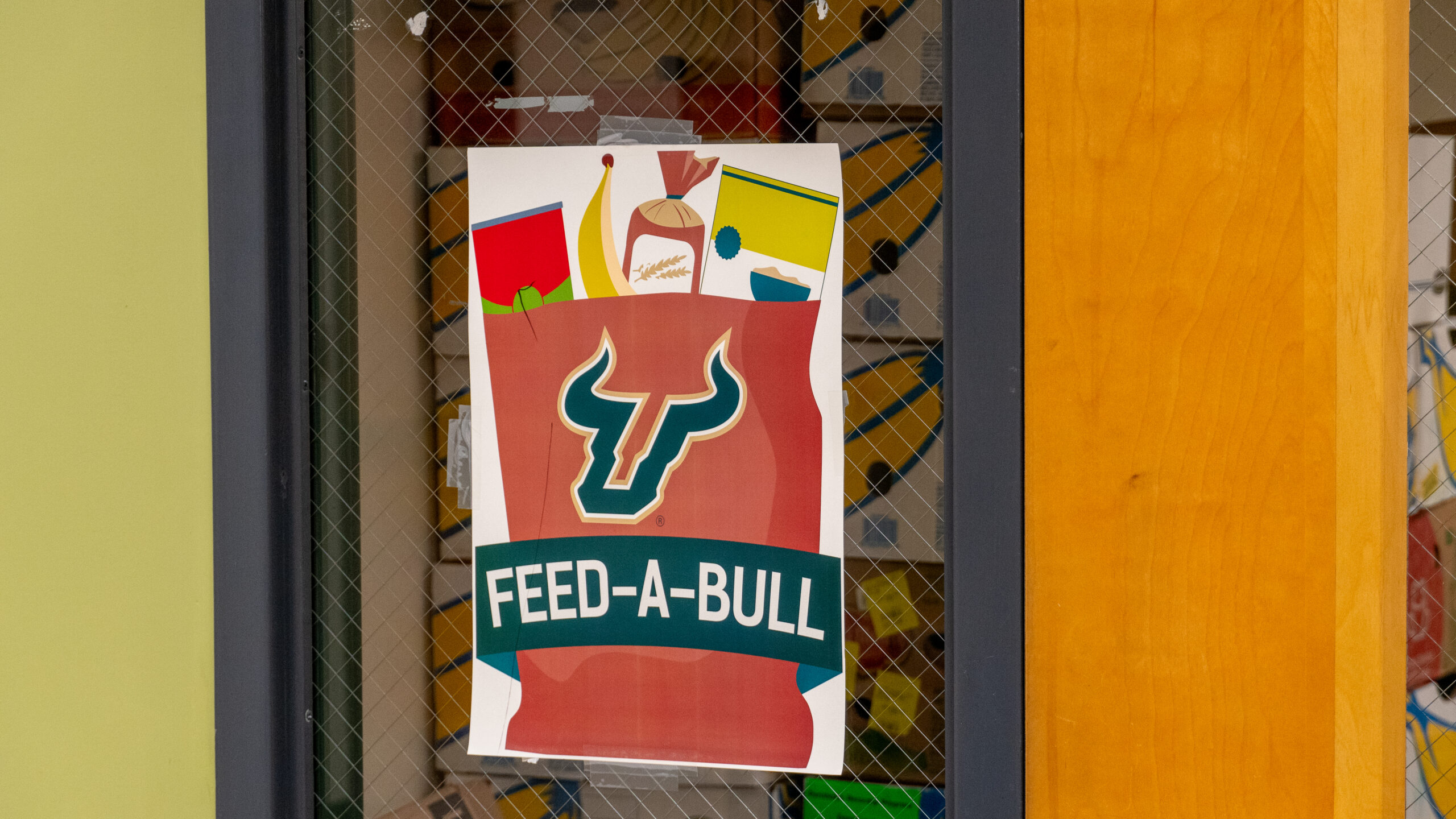OPINION: Feed-A-Bull is apparently not Fund-A-Bull

USF’s Feed-A-Bull food pantry receives no financial help from the university, even though increased housing and meal plan prices are part of the reason so many students have to rely on the program in the first place.
The pantry is already nearing the number of visits they typically see after an entire school year. The program is struggling to keep up with the demand.
RELATED: Feed-a-Bull pantry sees increasing demand from past years
Feed-A-Bull currently has no budget from USF, said program director Katie Webster in an Oct. 23 interview with The Oracle. The pantry has run entirely on food and monetary donations since it opened in 2015. However, as the population of students in need has grown, Webster says Feed-A-Bull has been exploring options for additional funding.
This funding could allow the pantry to undertake new initiatives, such as opening locations in different areas across campus or even opening a mobile food bank to make the program more accessible for those living off-campus.
The university needs to allocate funding to Feed-A-Bull to support the mental, emotional and academic well-being of students. Since USF has raised the costs of meal plans and housing, putting students under more financial strain, they need to step up.
Dorm rates at USF are currently between $3,070 to $6,130 per semester and are set to increase annually by 4.5% for the next five years. Many students are struggling to afford these increased rates along with tuition, food and other expenses.
RELATED: Is USF affordable? Students say they can barely pay for food, housing
Students struggling to pay rent or who cannot afford to purchase a meal plan have less security when it comes to stocking their cupboards, and may even be forced to go hungry.
Food insecurity – or inconsistent access to sufficient food – is common among college students.
In the 2019-20 academic year, graduate students from the USF College of Public Health, Renee Wallace, Cody Brown, Nicole Wenstrom and Mariam Badru, investigated college food insecurity for a class project.
They found that one in five USF students are food insecure, but acknowledged that the real number is likely even higher. With such a significant number of students in need, the school needs to focus on providing them with the resources to stay physically and mentally healthy.
USF has a large population of students from lower-class backgrounds. About one third of all students qualify for the Pell Grant, which is a financial aid program for lower-income families. These students are significantly more likely to struggle with food insecurity.
Food insecurity drains students both mentally and emotionally. College is already a time of major change for students, and they shouldn’t have to worry about whether or not they can afford to eat. This stress will likely lead to anxiety and depression, also hurting students’ self-image and self-esteem.
This issue also affects academic performance. When students are not able to consume enough nutrients, they are not going to be able to concentrate, making it significantly harder for them to succeed academically, according to a 2021 study published in the National Library of Medicine.
Feed-A-Bull was supposed to expand to a larger space last semester, but they were not able to because “space on campus is in high demand by colleges and departments.” Webster said the pantry will continue to operate out of their current space for as long as necessary, but it is not ideal for efficiency.
While the pantry that feeds struggling students has no funding, USF has been able to allocate plenty of money toward other areas of the school.
The university is currently in the midst of multiple expensive projects. One of these is the $340 million dollar football stadium scheduled to open in 2026. While much of this money is coming from loans and grants, $140 million is from USF itself.
Rather than spending so extravagantly on the new stadium, some of that money would be better used to ensure that the university’s students have consistent access to nutritious food. The extra funding could also be used to help Feed-A-Bull open other locations on and around campus or even open a mobile food bank.
Funding for Feed-A-Bull needs to be at the top of the university’s priority list in order to keep students thriving mentally, emotionally and academically. The food pantry has done amazing work with the donations they have been given, but funding from USF could help them go much farther.
The university’s recent price increases have left many students struggling to afford groceries and now USF needs to step in and provide funding for this program to make sure no one in the community has to go without a meal.







